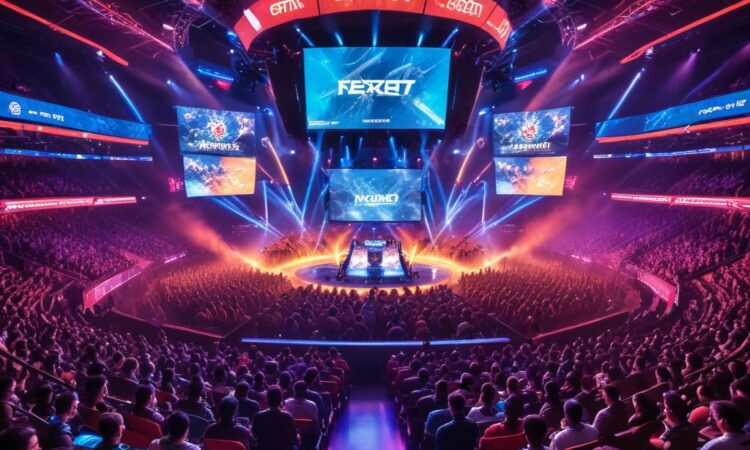The Impact of Streaming on Esports: Twitch, YouTube, and the Shaping of a Landscape
The rise of esports has been nothing short of meteoric, transforming a niche hobby into a global phenomenon. At the heart of this evolution lie streaming platforms like Twitch and YouTube, playing a pivotal role in shaping the esports landscape and influencing everything from viewership to player careers and tournament formats.
A Catalyst for Growth: The Power of Streaming
Before the advent of platforms like Twitch and YouTube, accessing esports content was a challenge. Dedicated fans relied on obscure websites, forums, and occasional television broadcasts. Streaming, however, revolutionized accessibility, offering a front-row seat to the action for anyone with an internet connection.
The convenience and interactivity of streaming platforms proved irresistible. Spectators could watch live tournaments, interact with fellow fans in chat rooms, and engage with their favorite players directly. This fostered a sense of community, drawing in a wider audience and fueling the esports boom.
Accessibility and Viewership Explosion: A Paradigm Shift
Streaming platforms democratized esports viewership. No longer confined to dedicated arenas or television screens, fans could access tournaments from their homes, workplaces, and even on the go. This accessibility dramatically expanded the audience, propelling esports into the mainstream.
The sheer volume of viewership on platforms like Twitch and YouTube is staggering. Major esports events routinely draw millions of viewers, surpassing traditional sports broadcasts in some cases. These platforms have become the primary destination for esports content, driving a significant portion of the industry’s revenue.
The Rise of the \”Esports Star\”: Player Careers Transformed
Streaming platforms have also redefined the role of esports players. They have become celebrities in their own right, interacting directly with their fan base through live streams and online content. This level of engagement has helped players build brands, secure sponsorships, and earn significant income beyond tournament winnings.
Many successful esports players leverage streaming to cultivate their personal brand, sharing their gameplay, personalities, and insights with their followers. This has led to the emergence of \”professional streamers,\” individuals who generate income solely through streaming, often surpassing traditional professional players in terms of earnings.
Evolution of Tournaments: Adapting to the Streaming Era
The influence of streaming platforms extends beyond viewership and player careers. Tournament organizers have adapted to the changing landscape, incorporating streaming into their strategies to maximize engagement and reach a wider audience.
Streaming has become an integral part of tournament production, with dedicated streams for individual matches, player perspectives, and behind-the-scenes coverage. This has enhanced the viewing experience, offering fans a more immersive and interactive way to follow their favorite esports events.
Furthermore, tournament formats have evolved to accommodate streaming. The rise of \”online qualifiers\” and \”remote tournaments\” allows for a more flexible and accessible competition structure, enabling players from around the world to participate and compete on a global stage.
Beyond the Hype: Challenges and Concerns
Despite the undeniable benefits of streaming for esports, several challenges and concerns remain. One key issue is the potential for burnout and mental health strain on players who are constantly under the public eye.
The pressure to perform and maintain a high level of engagement can be overwhelming, especially for young players entering the competitive scene. This emphasizes the importance of proper mental health support for esports athletes, a factor often overlooked in the pursuit of victory.
The Monetization Dilemma: Balancing Revenue and Content
Another challenge lies in the monetization of esports content. While streaming platforms offer avenues for revenue generation, the landscape is constantly evolving, with platforms competing for user attention and advertisers vying for space.
Balancing the need for revenue with the creation of engaging and high-quality content is a constant balancing act for both players and tournament organizers. The potential for exploitation and unsustainable practices remains a concern, requiring careful consideration of fair compensation models and content creation strategies.
The Future of Esports: A Streaming-Fueled Evolution
The impact of streaming on esports is undeniable. These platforms have propelled the industry’s growth, transforming how we consume, participate in, and perceive esports. As technology continues to advance and the esports landscape continues to evolve, the role of streaming will likely become even more prominent.
From the emergence of virtual reality and augmented reality experiences to the integration of artificial intelligence and machine learning, streaming platforms will be at the forefront of innovation, shaping the future of esports and how fans interact with their favorite games and athletes.
The relationship between esports and streaming platforms is symbiotic, each driving the other’s evolution. As the industry continues to grow, it is crucial to address the challenges and concerns that arise, ensuring a sustainable and ethical future for both the players and the fans who fuel this global phenomenon.

